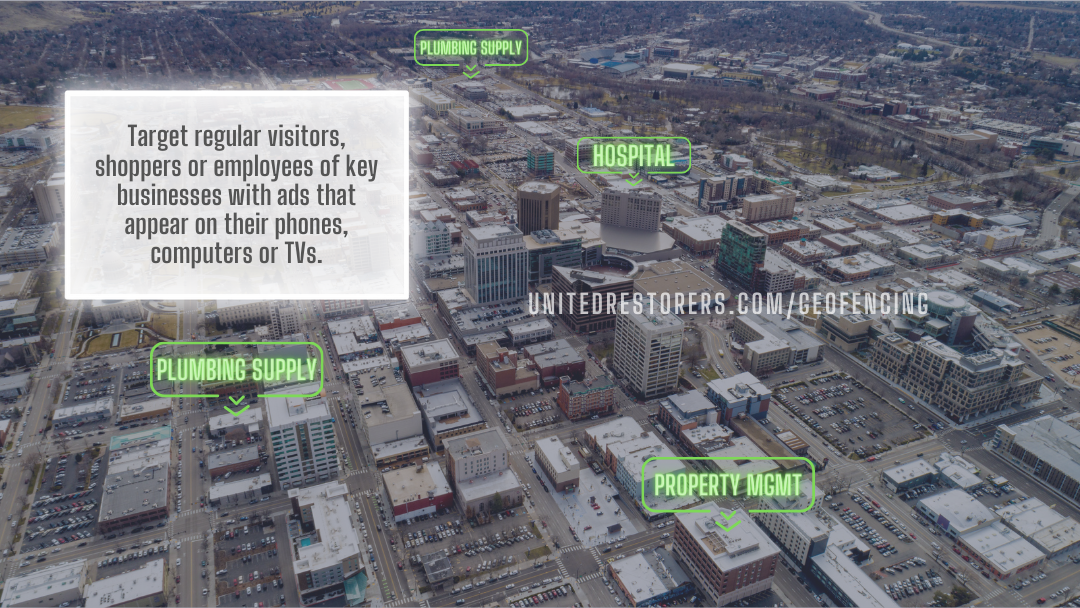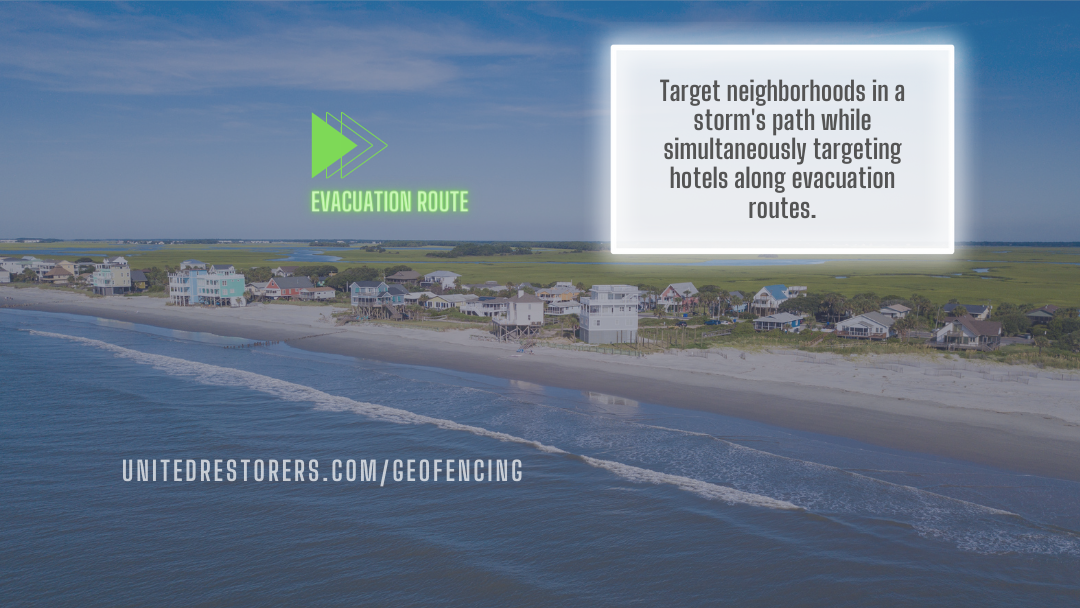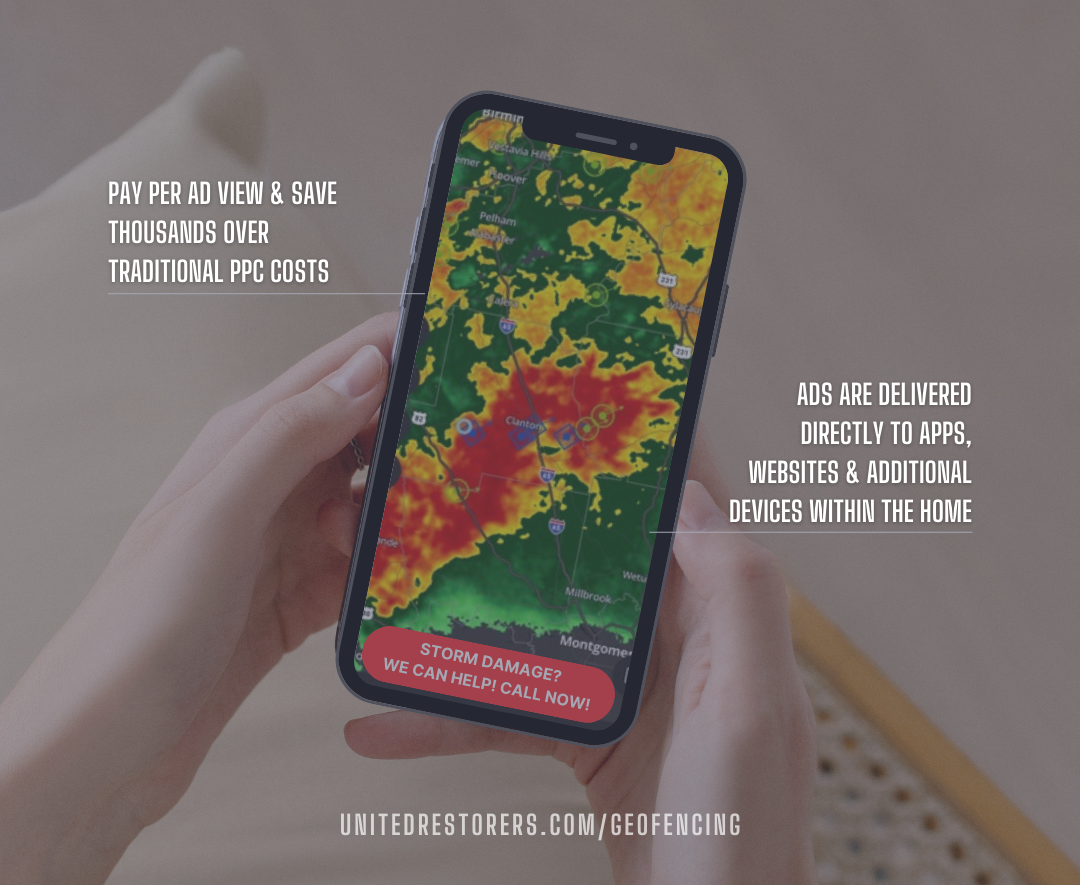- © 2025 United Restorers. All Rights Reserved.
Geofencing
What is Geofencing, and how can it help me?
You’ve probably heard the term “geofencing”. But what the heck does that mean? Every phone transmits its geolocation through GPS and WiFi data. Geofencing uses this geolocation data to build virtual boundaries in and around brick-and-mortar buildings. With this data, advertisers (like us) can push ad content to users in real-time or add these users to a database used for future advertisements.
We’re excited to announce United Restorers now offers geofenced advertising as a stand-alone service. This is separate from our PPC management and Social Media management services.
⇒ Target Specific Users & Referral Partners
⇒ Saturate a Market With Your Brand Before, During & After a CAT Event
⇒ Low Cost Per Ad-View
⇒ One-Time Setup Fee & Low Monthly Management Costs
⇒ Access Real-Time Reports Through Our Ad Console
⇒ No Markups on Ad Spend (Ever)
How Can I Use Geofencing to Generate Water Damage Leads?
Use Case #1 — Plumbers: We all know how important plumbers are to the Restoration industry. For years, Restorers have attempted to woo plumbers in Home Depot parking lots, through doughnuts dropped off at their shops and through giveaways or contests. We’ll call that strategy the “steam engine”. Geofencing is the “ramjet”. Now, when plumbers in your market shop at a plumbing supply store, we’ll capture the location data their phones transmit. With this data, we’ll send ads to their phones, computers — even their TVs — promoting your company. By clicking on your ad, they’ll land on a special page on your website that talks about why your Plumber Referral Program is the best.
This same strategy works for Property Management Companies, Hospitals, Insurance Agencies — any place where key decision makers work or shop can be targeted with geofencing.

Use Case #2 — CAT Events: When a storm or hurricane is bearing down on a region, our team builds and deploys Pay-Per-Click ads in a matter of hours. These PPC ads work wonders, but they’re expensive. Geofencing allows us to saturate a region, community or neighborhood in the days leading up to the storm for a fraction of the cost of traditional PPC ads.
Better yet, when a storm prompts evacuation orders, we can target hotels along the evacuation routes. This multi-pronged approach means customers are seeing your ads before, during and after a storm event. We’re no longer limited to targeting a storm’s aftermath only.

Geofenced display ads are sent directly to a customer’s phone. Ads can appear in apps and mobile websites. But that’s not all. Devices communicate with one another. Once we’ve added a customer to our geofenced database, we can send ads to their laptops, desktops — even other computers and devices within their home. And, as always, we can filter targeted customers by age, sex, interests, income, etc.

Geofencing is a game-changer in how we target customers and how we utilize ads to generate restoration work.
Here’s a recent interview we did about Geofencing with Klark Brown of Restoration Advisers:
Would you like more information about geofencing? Schedule a call with us today:

